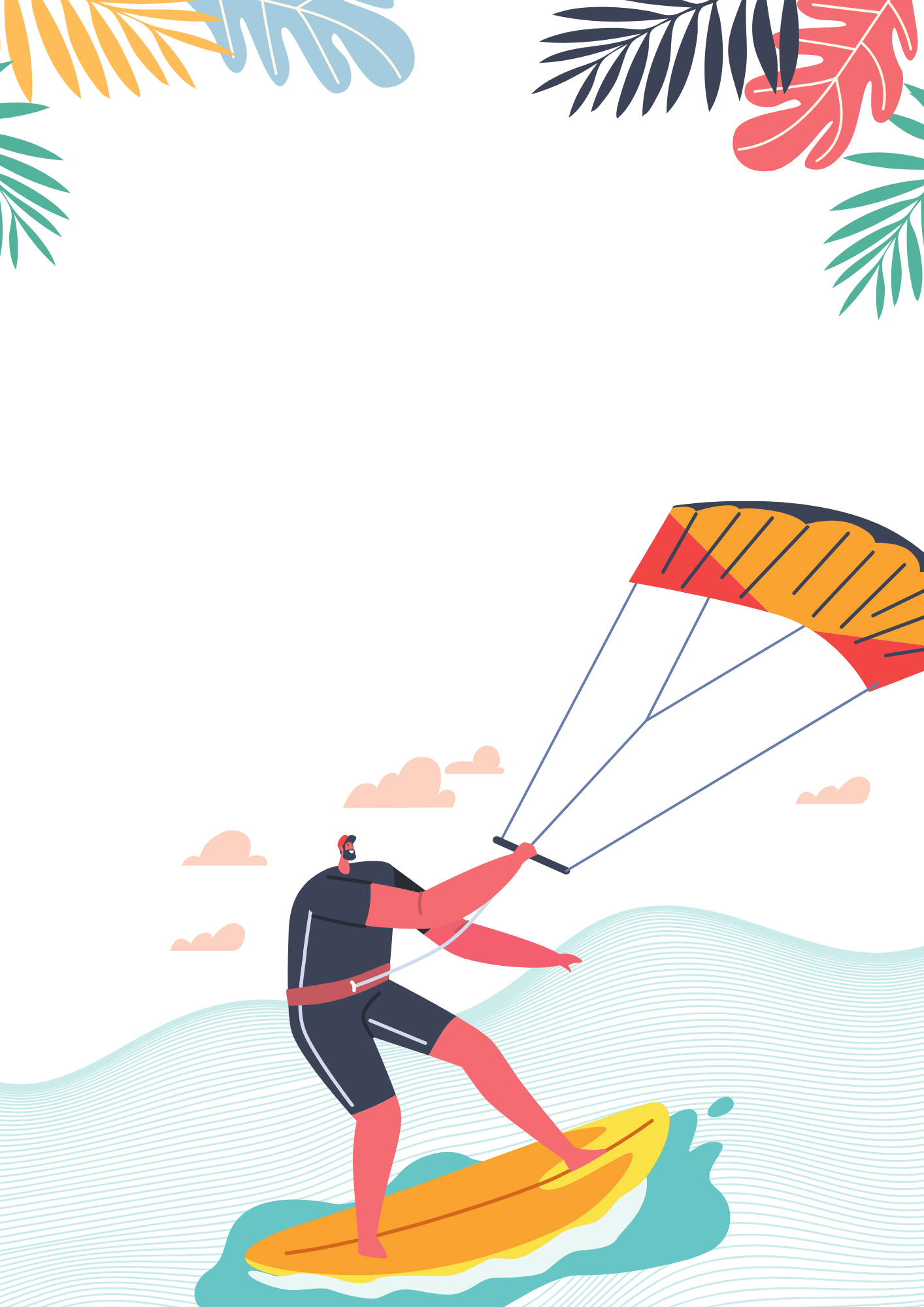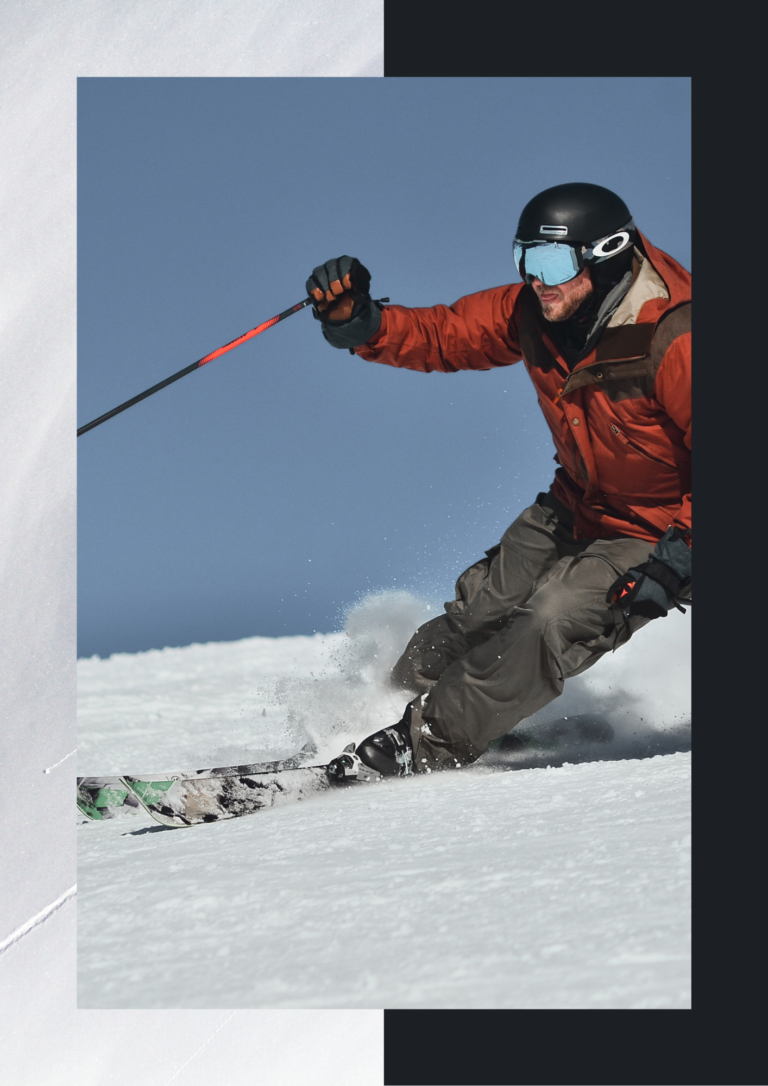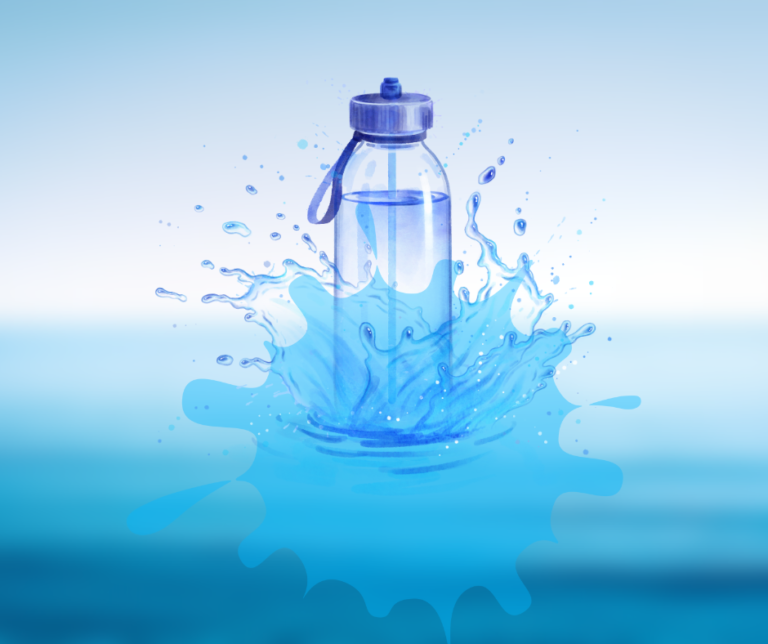Windsurfing Vs Kitesurfing
Windsurfing and kitesurfing, both exhilarating water sports, offer distinctly different experiences that cater to varying preferences and skill sets. Windsurfing combines elements of surfing and sailing, riders to harness the power of the wind through a sail attached to a board.
This creates a unique balance of stability and maneuverability, perfect for those who enjoy a more traditional approach to wind driven sports. Kitesurfing, introduces a dynamic twist by using a large kite that pulls the rider across the water. This method not only provides the thrill of speed but also for impressive aerial tricks, making it a magnet for adrenaline junkies.
What is the difference?
Windsurfing and kitesurfing draw in thrill seekers with the promise of adrenaline and adventure, but they cater to different styles and experiences. Windsurfing combines elements of surfing and sailing, where riders balance on a board harnessing wind power through a mounted sail.
This sport allows for a more intimate connection with the water, the rider can feel every wave and gust maneuvering their way through various conditions. The learning curve is steep, but once mastered, the satisfaction of carving through the waves is unparalleled.
Kitesurfing introduces an aerial element that sets it apart. Participants control a large kite, which lifts them off the water’s surface, for jumps and tricks that defy gravity. This sport emphasizes freedom and creativity, as riders can explore vast stretches of ocean with relative ease.
Kitesurfing tends to be more portable and requires less gear than windsurfing, making it an attractive option for those who travel frequently. You choose the stability of windsurfing or the exhilarating heights of kitesurfing, both sports offer unique ways to harness the power of wind and water, inviting enthusiasts to discover their own personal thrill.
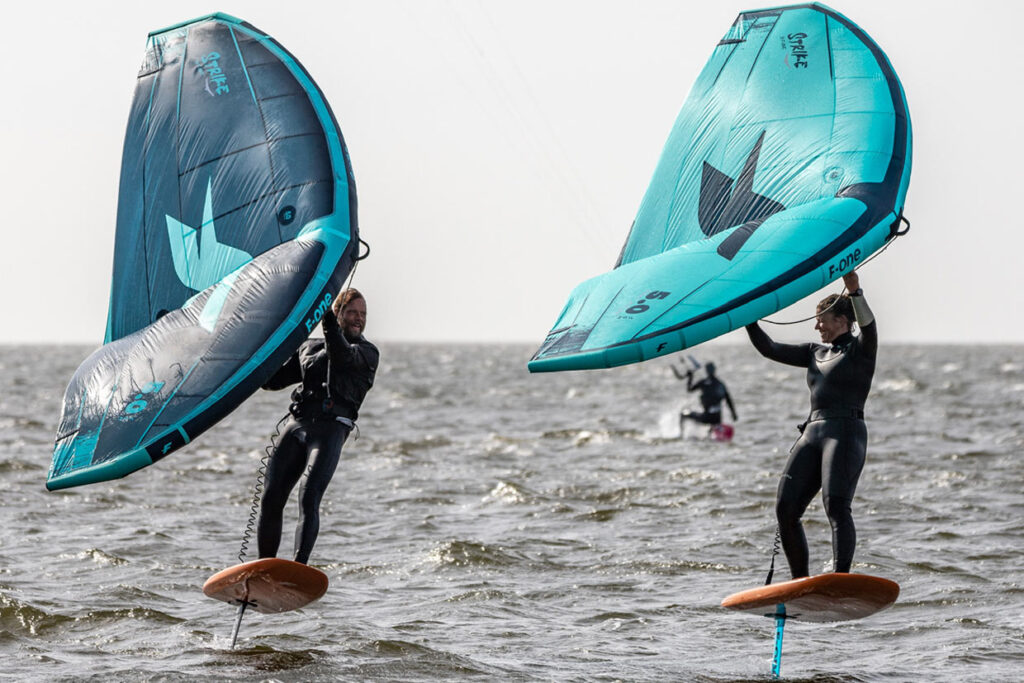
Which is easier to learn?
Comparing windsurfing vs kitesurfing, many aspiring water sports enthusiasts often wonder which sport is easier to learn. Windsurfing typically offers a more stable platform for beginners, as the board is directly attached to the sail, for greater balance and control.
This connection helps newcomers grasp the basics of harnessing wind power upright on the board. The learning curve can feel gentler, with many schools providing reliable equipment that enhances stability, making it easier for first timers to get up and ride.
Kitesurfing presents a unique challenge with its independent kite and board setup. Mastering the kite control can be daunting at first, many find that they conquer this skill, the thrill of kitesurfing offers an exhilarating experience unmatched by other sports.
The freedom of movement and ability to ride in a variety of conditions can attract those looking for versatility in their water sports journey. The choice between windsurfing and kitesurfing may come down to personal preferences and the type of thrill one seeks on the water each sport has its own charm and challenges waiting to be explored.
Learning to windsurf
Windsurfing offers a unique blend of skill and exhilaration that sets it apart from kitesurfing. Both sports harness the wind to propel riders over water, windsurfing provides a more intimate connection with the elements.
You balance on the board and adjust the sail, you’ll find yourself becoming acutely aware of the wind’s direction and intensity. This dynamic relationship fosters an exhilarating sense of freedom, as every gust invites you to experiment with new maneuvers and techniques. Learning to windsurf can be a meditative experience.
The rhythmic ebb and flow of the water beneath your board, combined with the challenge of mastering the sail, encourages mindfulness. Unlike kitesurfing, where the kite’s power can sometimes feel overwhelming for beginners, windsurfing for a more gradual progression.
Small victory it’s successfully tacking or catching your first plane builds confidence and deepens your appreciation for this captivating sport. You’ll not improve your technical skills but also develop a profound respect for nature’s forces, making windsurfing a journey of personal growth as much as an adventure.

Learning to kitesurf
Kitesurfing offers a unique blend of thrill and serenity, drawing enthusiasts who crave the exhilaration of riding the wind gliding over water. Unlike windsurfing, you’re tethered to a board with a sail, kitesurfing allows for greater freedom of movement.
This dynamic sport utilizes a power kite that harnesses the wind’s energy, riders to perform stunning aerial tricks or carve effortlessly across the waves. The feeling of being lifted off the water, combined with the rush of speed, creates an unmatched adrenaline experience that captivates both beginners and seasoned athletes alike.
Appealing aspects of kitesurfing is its accessibility, many find it easier to learn than windsurfing due to the intuitive nature of controlling the kite. New learners can start with basic techniques on land before transitioning to the water, gradually building confidence as they master the art of kite control.
The camaraderie among kite surfers fosters a supportive environment, making it easier to share tips and tricks. You progress, you’ll discover that the sport not only enhances your physical abilities but also sharpens your mental focus an exhilarating blend that keeps you coming back for more. Every session on the water offers opportunities for personal growth and unforgettable memories.
Windsurfing and kitesurfing gear
When diving into the world of windsurfing vs kitesurfing, the gear plays a pivotal role in shaping your experience on the water. For windsurfing, the setup typically includes a board, sail, and mast, all of which must be carefully selected based on skill level and conditions.
The beauty of windsurfing gear lies in its versatility, you progress, you can easily upgrade components like sails or boards to match your evolving style. The thrill of harnessing the wind through a large sail invites a unique connection with the elements, making each session feel fresh and exhilarating.
Kitesurfing gear offers a different but equally exhilarating approach. A kite, control bar, and board are essential for this sport, riders to leap into the air and perform stunning tricks that windsurfers can only dream of. Kites come in various shapes and sizes, tailored for different wind conditions and riding styles, no two sessions are ever the same.
You explore kitesurfing, the ability to adapt your kite setup can transform your experience, opening doors to new challenges and adventures. You choose the dynamic engagement of windsurfing or the aerial freedom of kitesurfing, investing in quality gear will your time on the water and deepen your appreciation for these thrilling sports.
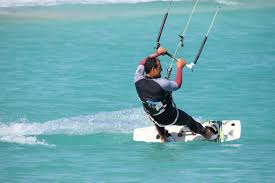
Gear Cost
When diving into the world of windsurfing and kitesurfing, the initial investment in gear can often feel daunting. It’s crucial to recognize that the cost of gear is not just a number, it represents an entry point into a thrilling lifestyle.
High quality boards, sails, and kites can range from affordable options to high end models, but choosing the right gear is less about the price tag and more about performance and durability. Investing in reliable equipment can your experience on the water, you spend more time riding the waves and less time worrying about breakdowns or inadequacies.
The resale market for windsurfing and kitesurfing gear is vibrant, allowing enthusiasts to buy and sell used equipment at a fraction of the original cost. This accessibility makes it easier for newcomers to join the community without breaking the bank. Many local shops offer rental program you to test different gear before committing to a purchase.
Taking advantage of these opportunities, you can find the perfect balance between quality and budget while fostering a deeper connection with your chosen sport. The value of your gear investment can transform your approach to windsurfing and kitesurfing, making each session on the water not just an activity, but a cherished adventure.
Transporting your gear to the water
Transporting your windsurfing and kitesurfing gear to the water can be an adventure in itself, the stage for the thrill that lies ahead. The journey from your vehicle to the water’s edge offers an opportunity to connect with fellow enthusiasts and share tips or stories about the day’s conditions.
It’s more than a mere logistical task , it’s a chance to the camaraderie of the sport. Consider investing in a quality wheeled bag or cart specifically designed for your equipment this not only eases the burden but also protects your gear from unexpected bumps along the way.
You navigate sandy beaches or rocky paths, take a moment to appreciate the landscape around you. The anticipation builds with each step, and you might find inspiration in the scenery or the rhythm of the waves crashing nearby.
This time as a warm up for your session, stretch, breathe deeply, and visualize the exhilarating rides ahead. Every transport experience is unique, shaped by the location and conditions, so relish in the small moments that make your windsurfing or kitesurfing journey memorable.
Gear life
Gear life is more than a collection of equipment , it’s a lifestyle that intertwines passion with performance. In the worlds of windsurfing and kitesurfing, the right gear can transform a good day on the water into an extraordinary experience.
You’re gliding over waves or catching air with a kite, the nuances of your gear from the sail size to the board shape can drastically affect your performance and enjoyment. Investing time in understanding these elements not only your skills but also deepens your connection to the sport.
The evolution of windsurfing and kitesurfing gear brings exciting possibilities. Modern materials make boards lighter and sails more responsive, allowing for greater agility and control. This means that beginners can progress faster seasoned riders can push their limits further than ever before.
This innovation fosters a sense of community among enthusiasts, as sharing tips on gear selection and maintenance becomes part of the shared experience. Gear life isn’t merely about what you own , it’s about how you engage with it, adapt to its changes, and thrive in the exhilarating world of water sports.
Where to kitesurf/windsurf at?
When it comes to kitesurfing and windsurfing, the world is your playground, but some spots truly stand out for their unique conditions and vibrant culture. The flat waters of the Caribbean islands, particularly in places like Culebra, Puerto Rico, offer not stunning scenery but also ideal wind conditions year round.
The shallow lagoons allow beginners to practice safely, more experienced riders can push their limits with challenging tricks against a backdrop of turquoise waters and white sandy beaches. You’re seeking a more adventurous vibe, head to Cape Town, South Africa.
Known for its consistent winds and dramatic landscapes, spots like Kite Beach and Bloomberg strand attract thrill seekers from around the globe. You can ride alongside majestic Table Mountain enjoying the camaraderie of a lively kitesurfing community. Plus, the local culture offers a rich mix of food, art, and music that enhances the overall experience, making every session on the water just a part of an unforgettable journey.
Wind range
The wind range is a critical factor in both kitesurfing and windsurfing, directly influencing the performance and safety of each ride. For kite surfers, the nuances of wind speed can mean the difference between an exhilarating session and an exhausting battle against the elements.
With kites that can adjust their power and lift according to varying wind conditions, enthusiasts are encouraged to familiarize themselves with their equipment’s ideal wind range. This knowledge not their experience but also empowers them to make informed decisions about when and where to hit the water.
Windsurfing, presents its own unique challenges and advantages tied to wind conditions. Sail size and shape play a crucial role in how effectively a windsurfer can harness the wind’s power. Riders often find themselves adjusting their gear based on real time wind fluctuations, adds an element of strategy to the sport.
Honing the ability to read wind patterns and shifts, windsurfers can glide effortlessly across the water, maximizing their speed and agility. Both sports evolve, understanding and mastering the concept of wind range remains a cornerstone for riders seeking to push their limits and the thrill of the open sea.
High performance sailing
High performance sailing embodies the thrill of harnessing nature’s elements to achieve speed and agility on the water. Unlike kitesurfing or windsurfing, where riders dance atop the waves with a board and a sail or kite, high performance sailing involves sophisticated vessels designed for maximum aerodynamic efficiency.
These cutting edge sailboats, equipped with advanced materials and technology, allow sailors to slice through water at remarkable speeds, pushing the boundaries of what’s possible. The experience is not speed, it’s an intricate dance with the wind, requiring acute awareness and precision in sail trim and weight distribution.
High performance sailing offers a unique blend of competition and camaraderie, often showcased in events like the America’s Cup or the Volvo Ocean Race. This environment fosters innovation, as teams continuously seek to improve their designs and tactics, mirroring the relentless pursuit seen in kitesurfing and windsurfing communities.
The strategic elements of high performance sailing like understanding shifting wind patterns or optimizing crew roles provide insights that can be invaluable for enthusiasts of all wind-driven sports. Sailors new technologies such as foiling, which lifts the hull above the water for reduced drag, they invite a fresh wave of excitement that invigorates the entire sailing landscape.
Danger and safety
In the exhilarating world of kitesurfing and windsurfing, danger lurks as both an adversary and a teacher. The rush of gliding across the water is often accompanied by unpredictable elements gusty winds, shifting tides, and the ever present risk of equipment failure.
These challenges can be transformed into opportunities for growth, urging enthusiasts to develop not their skills but also their instincts. The inherent risks can lead to a deeper understanding of the environment and one’s own capabilities.
Safety is not merely a checklist , it’s a mindset that empowers kite surfers and windsurfers to push boundaries respecting the forces of nature. Cultivating awareness and honing decision making skills, riders can navigate perilous situations with confidence.
Investing in quality gear, knowing local conditions, and practicing emergency maneuvers are essential components of a safe experience. The dance between danger and safety elevates the thrill of water sports, transforming each session into a lesson in resilience and adaptability.
Physical conditioning
Physical conditioning plays a crucial role in performance in dynamic water sports like kitesurfing and windsurfing. Both activities demand not strength but also agility, balance, and endurance.
Engaging in targeted workouts that mimic the movements involved in these sports can dramatically improve muscle memory and overall coordination. Incorporating exercises that focus on core stability such as planks or medicine ball rotations can help riders maintain control navigating gusty winds and shifting waves.
Cross training can provide unique benefits that may be overlooked. Activities like yoga flexibility and mindfulness, athletes to connect more deeply with their bodies on the water. This mental aspect is crucial when facing unpredictable conditions, it fosters adaptability and confidence.
Incorporating resistance training tailored to the specific muscle groups used in kitesurfing and windsurfing can lead to increased power during maneuvers, riders to execute tricks with greater ease and precision. A well rounded physical conditioning regimen not boosts performance but also enriches the overall experience of riding the wind and waves.
Conclusion
Both kitesurfing and windsurfing offer exhilarating experiences on the water, appealing to thrill seekers and nature lovers alike. Kitesurfing provides a unique blend of speed and aerial maneuvers, windsurfing boasts its own charm with a focus on balance and control.
Each sport has its distinct community, gear, and techniques that cater to different preferences and skill levels. You consider which sport might be right for you, think about what excites you most , the freedom of flight or the grace of gliding.
FAQ
What is the difference between kitesurfing and windsurfing?
Kitesurfing uses a large kite to harness wind power riding a board, windsurfing involves a board with an attached sail that the rider leans on to steer.
Do I need prior experience to start kitesurfing or windsurfing?
Both sports can be learned by beginners, it’s advisable to take lessons from certified instructors to safety and effective learning.
What equipment do I need for kitesurfing?
Essential equipment includes a kite, control bar, harness, board, and safety gear like a helmet and impact vest.
